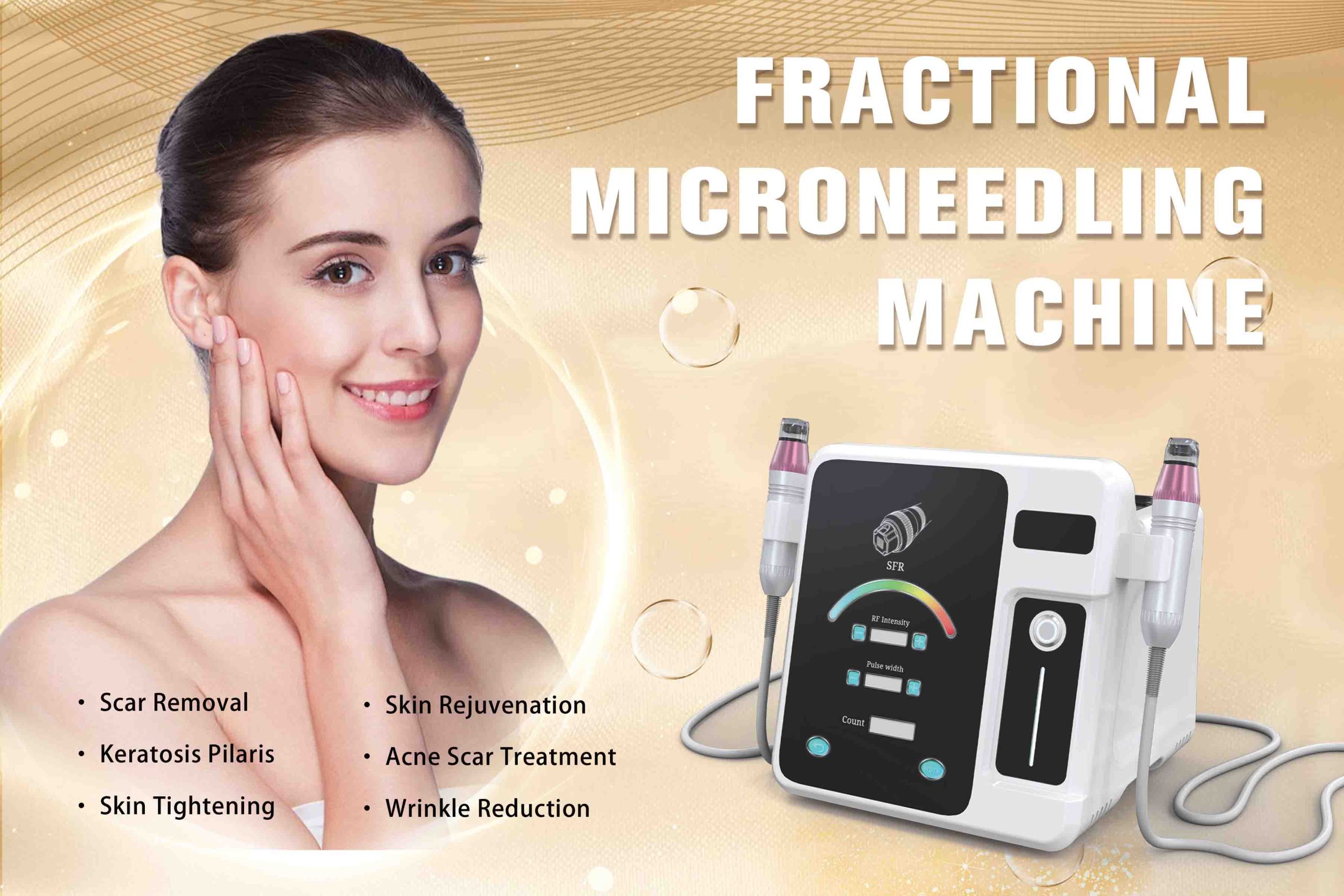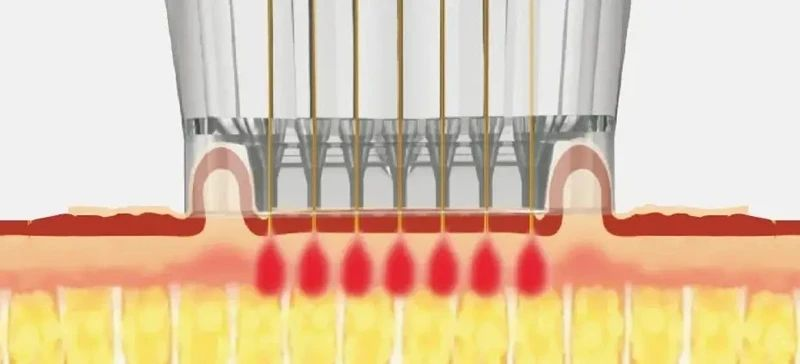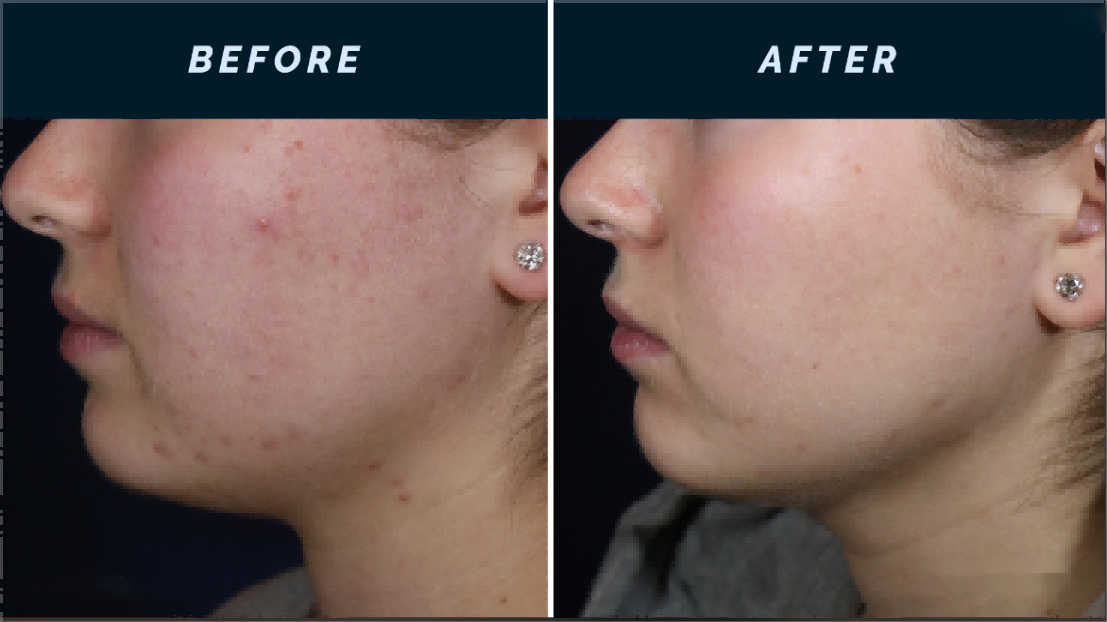Comprehensive Guide to RF Microneedling Duration: Understanding the Science and Maximizing Results

1.The Core Mechanism and Principle of Effect Generation of RF Microneedling
1.1 Synergistic Effect of Microneedling Puncture and RF Energy
RF microneedling create precise and controllable microchannels on the surface of the skin through extremely thin needles with a diameter of only 0.01 millimeters. These microchannels not only trigger the natural healing response of the skin, but more importantly, provide a path for precise delivery of rf energy. When 5MHz or 8MHz radio frequency waves pass through these microchannels directly to the dermis, dual biological stimuli are generated.
On the one hand, thermal energy causes the existing collagen fibers to immediately contract, producing an immediate tightening effect. On the other hand, precise thermal stimulation at 60-65 ℃ can activate dermal fibroblasts and bring them into a highly active state. This mechanism makes the arrangement structure of newly formed collagen more compact and orderly. Compared with traditional laser treatment, the collagen proliferation induced by rf microneedling is 40% -60% higher.

1.2 Dynamic Timeline of Collagen Remodeling
The effectiveness of rf microneedling follows specific biological temporal patterns. During the acute phase from 0 to 72 hours after treatment, inflammation and epithelial regeneration mainly occur. On the 3rd to 14th day, fibroblasts enter the proliferative phase and begin to synthesize a large amount of procollagen. The true collagen remodeling lasts from day 21 to 6 months.
Clinical data shows that approximately 65% of collagen neovascularization occurs during the critical window period of 4-8 weeks after treatment. It is worth noting that the quality of newly formed collagen will continue to improve over time – the initially formed type III collagen will gradually be replaced by tougher type I collagen, which explains why the skin tightening effect will show a secondary improvement phenomenon after 3 months.
2. Core Influencing Factors of the Duration of RF Microneedling Effect
2.1 Individual Physiological Factors
The physiological characteristics of different individuals directly affect the durability of rf microneedling. Age is one of the important factors. People around 30 years old usually have a 30% shorter duration of collagen metabolism compared to those over 50 years old. The latter has a higher stability of collagen after stimulation due to a decrease in natural skin repair ability.
Skin type can also affect the effect. Oily skin has active sebaceous glands and strong repair ability, and the newly generated collagen after microneedling is more durable. Dry skin is easily affected by external environment, and the effect may be shortened.
In addition, the depth of treatment is equally crucial. Needles with a length of 1.5mm or more can directly reach the deep dermis, stimulate stronger collagen regeneration, and have a more lasting effect, but are accompanied by a longer recovery period (about 5-7 days for redness and swelling to subside).
2.1 Key Points of Postoperative Care
Postoperative care is a controllable factor that determines the durability of outcomes. Sunscreen is crucial as ultraviolet radiation can break down newly formed collagen, leading to a shortened effect. It is recommended to avoid direct sunlight for 3 days after surgery, and then use SPF50+ PA+++sunscreen for a long time to extend the effect by 20%.
In addition, the choice of skincare products directly affects the repair efficiency. After surgery, stimulating ingredients such as alcohol and acids should be avoided, and products containing EGF and signal peptides (such as copper peptides and palmitoyl tripeptides) should be prioritized. They can accelerate wound healing and stabilize collagen structure. Research has found that continuous use of restorative products for 4 weeks after surgery can increase collagen density by 15% -20% and significantly prolong the effectiveness of microneedles.
3. Differences in Different Types of Microneedles
3.1 Conventional RF Microneedling (Monopolar RF)
Mainly applied to the superficial layer of the skin (0.5-1.5mm), it promotes collagen regeneration through microneedle stimulation combined with rf heating. Due to the relatively mild energy, the effect of a single treatment can usually last for 12-18 months, making it suitable for improving mild fine lines, enlarged pores, and other issues. However, due to limited stimulation depth and slow collagen regeneration rate, regular injections are needed to maintain the effect.
3.2 Gold RF Microneedling (Multi-polar RF+Microneedle)
By adopting more advanced multi-polar rf technology, energy can be accurately delivered to the dermis layer (1.5-3.0mm), which not only stimulates collagen, but also promotes the reorganization of elastic fibers, resulting in a more significant improvement in skin tightness. Therefore, its effect can last for 18-24 months, especially suitable for improving deep aging problems such as skin sagging and nasolabial folds.
3.3 Fractional RF Microneedling
Using dot matrix microneedles and rf, targeting serious problems such as acne pits and deep wrinkles, the skin is stimulated to self repair through high-density minimally invasive injuries. Due to the high intensity of treatment, the single effect can last for 6-8 months, but usually requires intensive treatment every 6 months to ensure continuous collagen regeneration.
4. Scientific Treatment Design and Cumulative Effects
4.1 Stage Characteristics of Initial Treatment Course
The first treatment mainly activates dormant skin stem cells, with a collagen proliferation rate of about 15-20%. During the second treatment (with a 4-week interval), due to the establishment of “biological memory” in the previous treatment, the fibroblast response was stronger, and the amount of newly synthesized collagen could reach 1.8-2 times that of the first treatment. By the third treatment, collagen fibers began to form a stable three-dimensional network structure. This stepped growth model allows the duration of the effect of a complete 3 treatment courses to be 3-4 times longer than that of a single treatment. It is worth noting that the interval between each treatment should not exceed 6 weeks, otherwise it will interrupt the forming positive feedback loop of collagen synthesis.
4.2 Precision Strategies for Maintaining Treatment
For dynamic wrinkles (such as forehead wrinkles and crow’s feet), it is recommended to use a combination of deep and shallow maintenance plan: perform a 1.0-1.5mm mid layer treatment every 3 months, combined with a 0.3mm extremely shallow layer care once a month. This mode can continuously stimulate collagen regeneration while avoiding skin barrier damage caused by repeated deep treatment.
For skin laxity, it is recommended to undergo a 3.0-3.5mm deep treatment every 6 months, with a focus on stimulating collagen remodeling in the fascial layer. The latest micro dose regimen shows that a monthly shallow treatment of 0.5mm combined with the introduction of specific growth factors can maintain skin rejuvenation indicators at over 80% of peak levels.
5. The Multiplier Effect of Postoperative Care on the Durability of Outcomes

5.1 Intervention Strategies for Critical Repair Period
The golden period for active ingredient penetration is 0-6 hours after treatment, during which the use of repair peptide substances can achieve a transdermal absorption rate 15-20 times higher than normal. The repair cream containing copper tripeptid-1 can significantly reduce the activity of metalloproteinases and control the collagen degradation rate below 30% of the baseline level.
Using a 4 ℃ medical cold compress within 24 hours after surgery, with a 15 minute interval and a 2-hour interval, can increase microvascular contraction efficiency by 60%, effectively preventing redness, swelling, and color fading after inflammation. It should be noted that the use of skin care products containing alcohol and essence should be avoided within 3 days after surgery. These ingredients may cause persistent irritation through unclosed microchannels.
5.2 Systematic Long-term Maintenance Plan
Sunscreen should be the core of postoperative care, and it is recommended to use broad-spectrum sunscreen products with SPF50+, PA++++, and reapply every 2 hours. The antioxidant essence containing 0.3% resveratrol can neutralize free radicals and protect the new collagen from oxidative damage.
In home care, using a rf beauty device 2-3 times a week (with an energy set to 30% of clinical treatment) can maintain fibroblast activity and prolong the effect by 20-25%.
In terms of diet, supplementing 10g of marine collagen peptide with 50mg of vitamin C daily can provide the key amino acids and cofactors required for collagen synthesis. The latest biofeedback skincare products are also worth paying attention to, as they contain intelligent peptides that can adjust the release rate according to the skin’s condition, providing a new option for long-term maintenance.
6.Introduction of Nubway’s Fractional Microneedling
Ready to level up your salon or personal hair removal with top-notch tech? Buy a diode laser hair removal machine from Nubway, a trusted name since 2012, selling to over 120 countries. Nubway was established since 2012. We integrated R&D, production, sales and training services for a highly efficient and optimal manufacturing corporation. Our products have obtained CE, FDA, ISO certifications at home and abroad. Pick Nubway today—where cool tech meets dependability for awesome results.
Nubway’s microneedling handpiece is an advanced skin resurfacing and ablation device that combines radiofrequency (RF) energy with vacuum suction for optimal skin contact, particularly in delicate areas like the eyes and neck. This innovative technology offers a wide range of treatments, including face lifting, skin tightening, wrinkle reduction, and pore shrinking, making it a versatile solution for comprehensive skin rejuvenation. With four different treatment head sizes, it can precisely target various facial and body areas for customized results. The device ensures enhanced comfort by minimizing pain, soothing the skin, and reducing pore size, while its efficient design helps reduce post-treatment bleeding and lower the risk of pigmentation, ensuring a smoother and safer recovery process.





